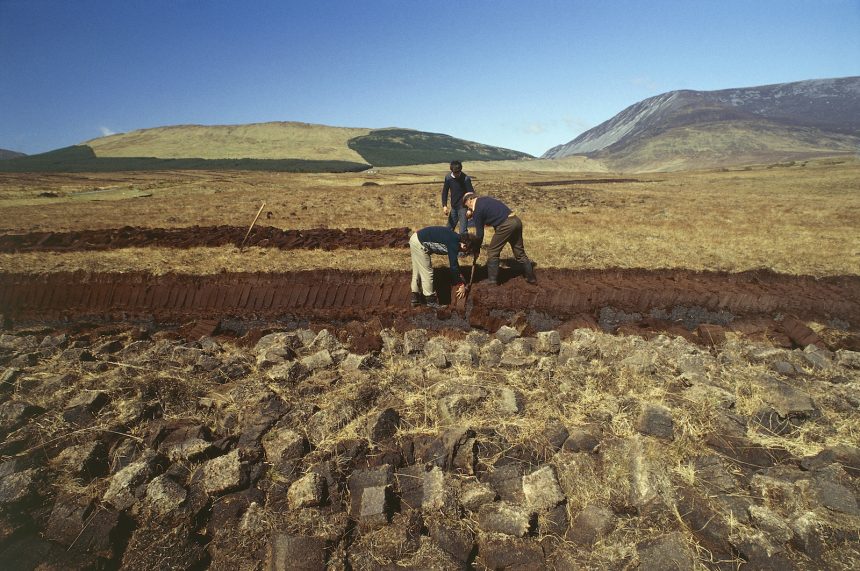On Achill Island, located off the coast of Ireland, Stephen Gavin, a 64-year-old local sheep farmer, has been harvesting peat from the wetlands near his home since April. The distinct scent of the bog fills the air as Gavin cuts rectangular sods of peat, a practice he learned from his parents at the age of 12. The harvested peat will be dried and used to fuel his home’s fire, continuing a tradition that has been passed down through generations.
Many older homes in Ireland’s west rely on turf as their primary source of fuel, as modern heating technology would require extensive renovations. The Irish government banned the commercial sale of turf in 2022, but individuals like Gavin, with historic turf-cutting rights, are allowed to continue harvesting for personal use.
However, the EU has designated Irish peat bogs as priority conservation regions, aiming to protect these vital habitats from activities like turf cutting that can harm the environment. Bogs play a critical role in carbon storage, with peatlands in Ireland absorbing and storing a significant amount of carbon. Overuse of turf cutting has led to significant degradation of these bogs, impacting biodiversity and contributing to carbon emissions.
Efforts are being made to restore and protect Irish bogs, with the government enrolling farmers in conservation programs to prevent overgrazing, manage invasive species, and reduce turf cutting on protected lands. The Irish National Parks and Wildlife Service, along with organizations like the Turf Cutters and Contractors Association (TCCA), are working to rewet and restore bogs while ensuring farmers’ needs are met.
While these conservation efforts are crucial for meeting emission reduction goals, they have been met with resistance from some who argue that turf cutting is essential for local livelihoods. The debate between conservationists and traditional turf cutters highlights the complex challenges facing Ireland’s bogs in the face of climate change and environmental protection measures.






